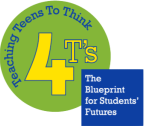Musallam shares a picture of his four year old who is in the stage of constantly asking, ‘Why?,’ as well as a video of his student, Maddie, who went home after one of his lessons and continued to explore the concept covered in class. He juxtaposes these two examples with the issue of youth dropping out of school, whether it’s “the senior who's checked out before the year's even begun or that empty desk in the back of an urban middle school's classroom.”
This teacher attributes the difference between these extremes to the ability and willingness of teachers to engage with their students’ curiosity. He explains, “Questions and curiosity like Maddie's are magnets that draw us towards our teachers, and they transcend all technology or buzzwords in education. But if we place these technologies before student inquiry, we can be robbing ourselves of our greatest tool as teachers: our students' questions.”
Musallam outlines three rules to help instructors reach this goal:
Rule number one: Curiosity comes first. Questions can be windows to great instruction, but not the other way around.
Rule number two: Embrace the mess. Trial and error can still be an informal part of what [teachers] do every single day.
Rule number three: Practice reflection. What [teachers] do is important. It deserves our care, but it also deserves our revision. Our students our worth it, and each case is different.
Oftentimes teachers can get stuck in the routine of their lessons, especially with the recent focus of administration and regulation on teaching to standards. I think Ramsey Musallam’s talk offers some great points about keeping vitality in the classroom in order to make the work of learning a back and forth between student and teacher. This approach will go much further than simply talking at students. I personally would like to see a lot more students like Maddie and kids who want to ask questions, rather than that empty seat in the back of the room.
-Samantha Phillips
Which school of thought do you agree with and why?

 RSS Feed
RSS Feed